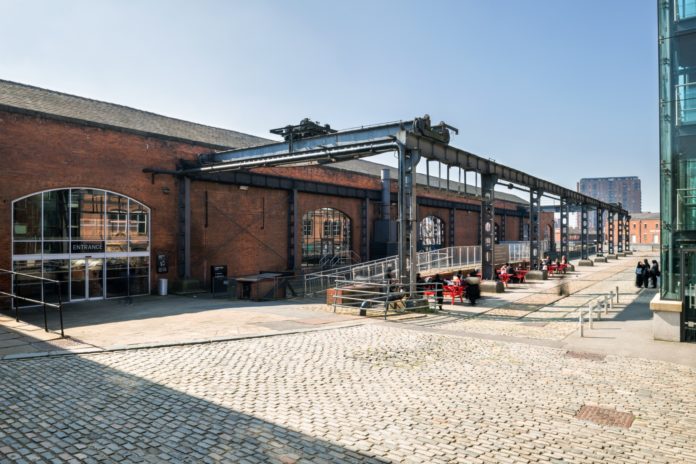The Science and Industry Museum will this week start to take receipt of over 1000 tons of materials as major repair work begins to restore the globally important Grade II listed Power Hall, to be complete by Summer 2021.
The rest of the museum will remain open with an ongoing programme of special exhibitions, experiences and events.
Scaffolding will start to rise across the historic structure over the next few months taking over 18,500 hours to erect with 1220 metres of specialist alloy beams for the roof, which laid end to end would be the equivalent of 10 football pitches.
The scale of the construction of the scaffolding is so great that every scaffold product laid end to end would cover the distance to the National Railway Museum in York … and back again. The total weight of all the materials combined is 275 Stephenson’s Rockets or 500 elephants.
One of the most beloved industrial heritage galleries in the country, the Power Hall houses Europe’s largest collection of working steam engines, the majority of which were built in Manchester.
Built in 1855 as the shipping shed for Liverpool Road Station, the world’s first purpose-built passenger railway station, the Power Hall has received £6m from the Department of Digital, Culture Media and Sport and additional funding from the Science Museum Group to facilitate urgent and major repairs to the roof and a redisplay of the gallery content to show how Manchester changed the world.
Sally MacDonald, Director of the Science and Industry Museum says “this multi-sensory gallery, full of the sounds of machines, whistle and smell of steam and incredible personal stories will show how Manchester provided the power that changed the city and the world—from the way we work to the consumer society we live in. In revealing more about the human skill and ingenuity of the past we can’t wait to inspire the engineers and innovators of the future.”
The Power Hall restoration is part of a larger, multi-million-pound long-term plan for the Science and Industry Museum. This will allow vital restoration and conservation work across the seven-acre site, open up new spaces (including a new Special Exhibitions Gallery opening in Autumn 2020 which will originate and host some of the world’s best science exhibitions) create a more sustainable museum and establish the Science and Industry Museum as a beacon for contemporary science and major cultural destination in the coming years.







